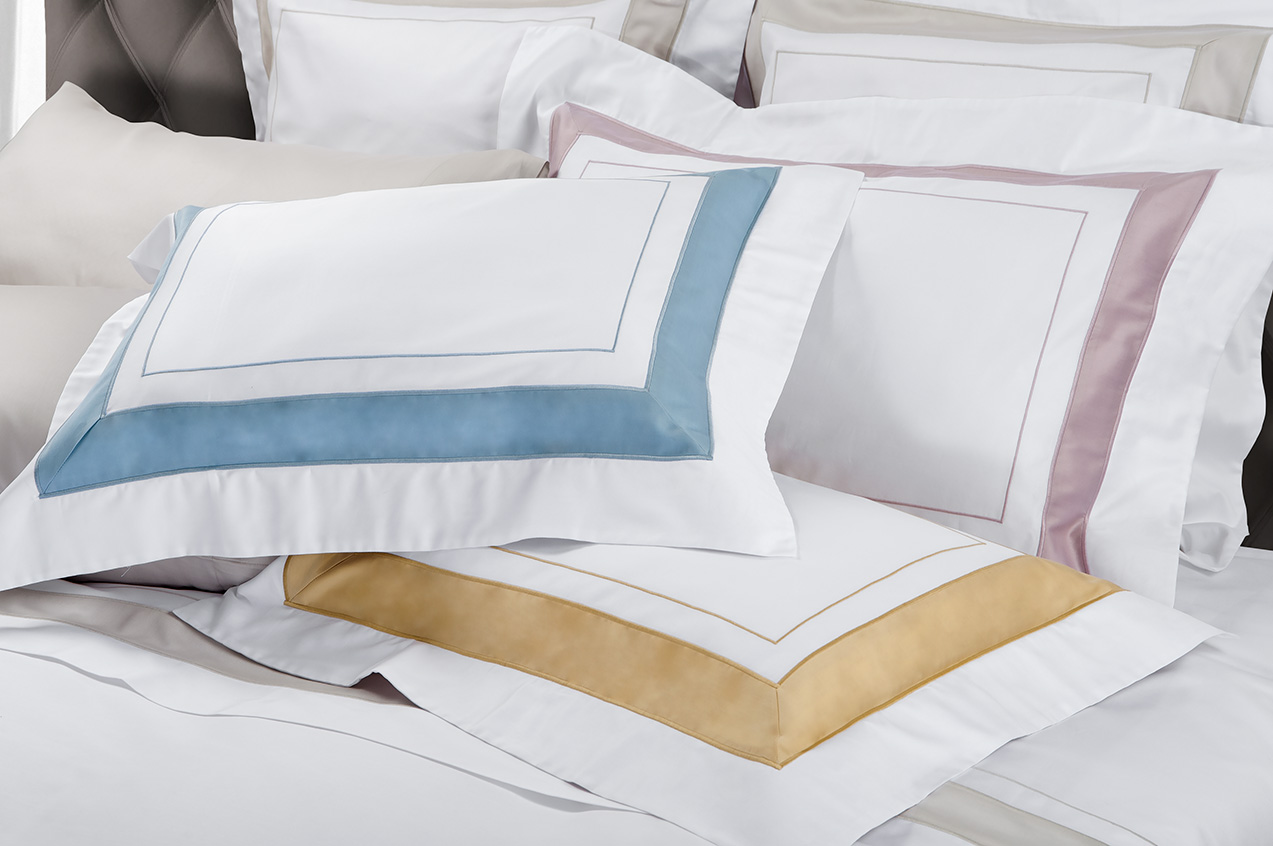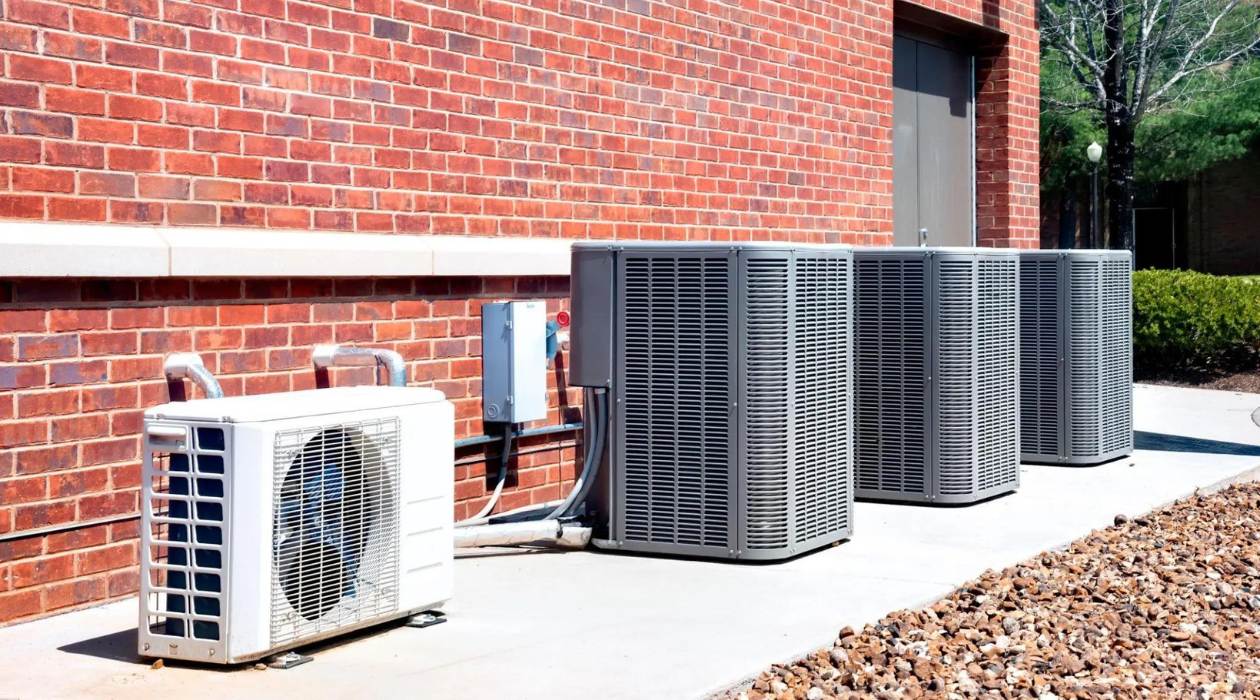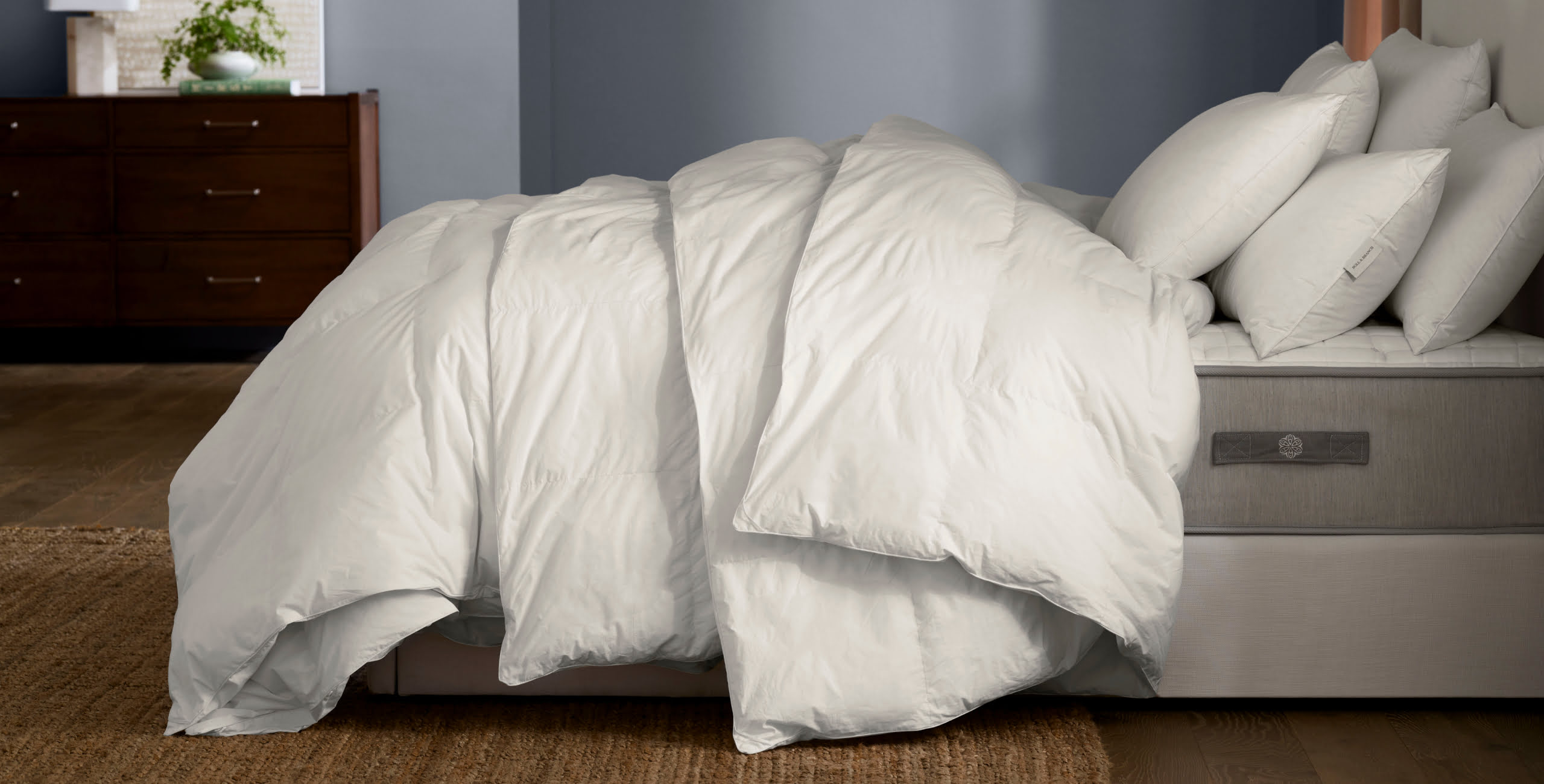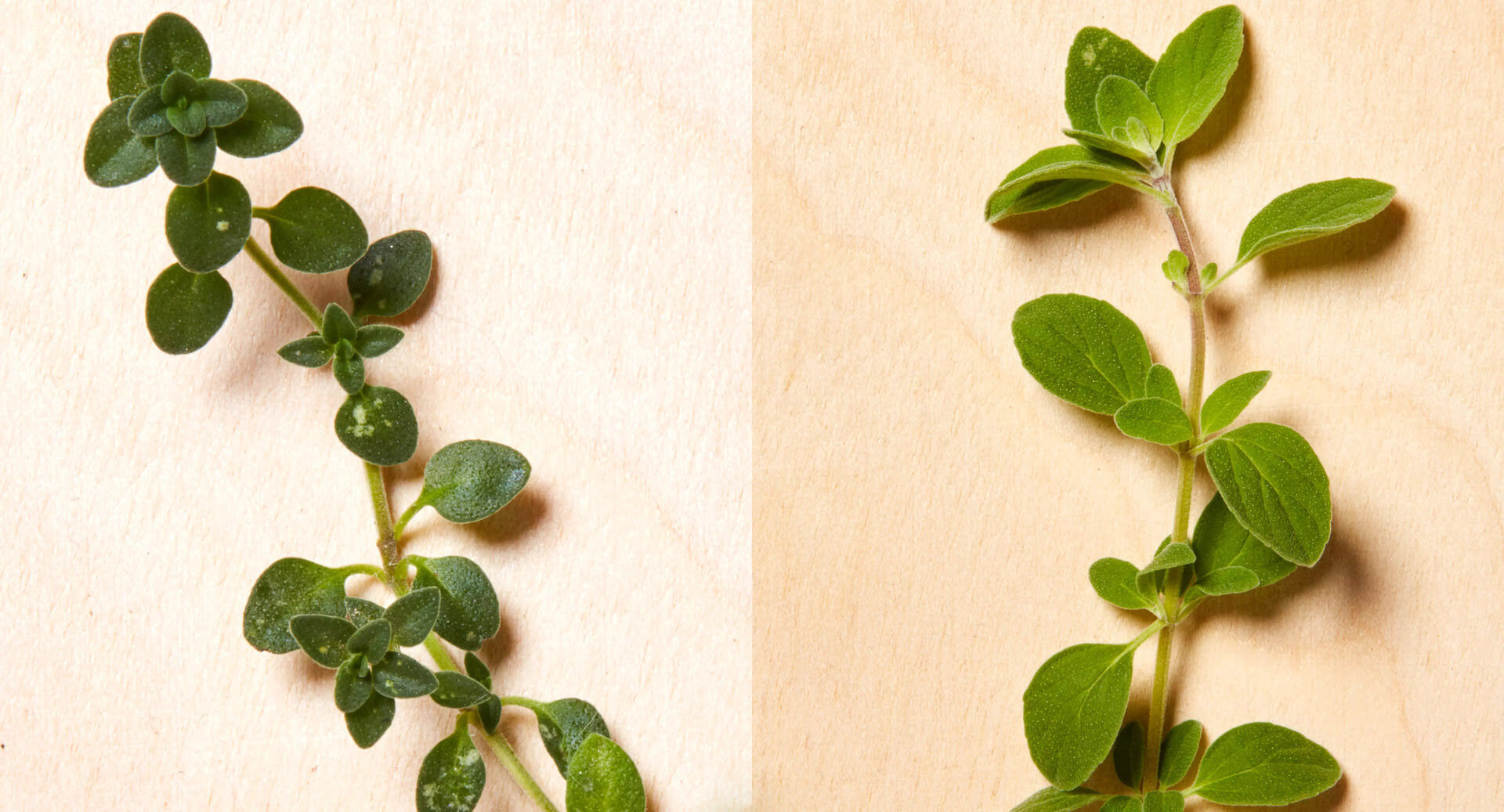Home>Articles>What Is The Difference Between A Sham And A Pillowcase?


Articles
What Is The Difference Between A Sham And A Pillowcase?
Modified: August 16, 2024
Discover the main distinctions between a sham and a pillowcase in this informative article. Explore their purpose, design, and how they contribute to your bedding ensemble.
(Many of the links in this article redirect to a specific reviewed product. Your purchase of these products through affiliate links helps to generate commission for Storables.com, at no extra cost. Learn more)
Introduction
When it comes to bedding accessories, it can be easy to confuse the different types of items available, such as shams and pillowcases. While both serve a similar purpose, there are distinct differences between them that are worth exploring. Understanding these differences can help you make informed decisions when it comes to choosing the right bedding for your needs.
In this article, we will delve into the differences between a sham and a pillowcase. We will examine their definitions, the varying materials and designs used, the purpose and usage differences, as well as ways to identify them. By the end, you will have a clear understanding of what sets a sham apart from a pillowcase.
Key Takeaways:
- Shams are decorative coverings meant to enhance the aesthetic appeal of a bed ensemble, while pillowcases prioritize functionality and hygiene, providing a comfortable and clean sleeping surface.
- Understanding the differences between shams and pillowcases allows for informed decisions when selecting bedding accessories, ensuring a cohesive and stylish sleep space while prioritizing comfort and cleanliness.
Definition of a Sham
A sham, in the context of bedding, refers to a decorative covering that is designed to be placed over a pillow. It is typically used as an aesthetic or decorative element to enhance the overall look of a bed. Shams are often made from the same fabric as the bedspread or duvet cover to create a cohesive and coordinated appearance.
Shams are typically rectangular in shape and feature a closure at the back, such as a zipper, buttons, or envelope flaps, to secure the pillow inside. They are often adorned with decorative elements such as embroidery, ruffles, or flanges to add texture and visual interest to the bed ensemble.
It’s important to note that shams are not meant to be slept on directly. They serve a decorative purpose and are usually placed in front of the pillows that are used for sleeping. This allows for easy removal and cleaning, as well as preserving the decorative elements on the sham itself.
Shams come in various sizes to match different pillow sizes, such as standard, queen, and king. They are commonly used in combination with other bedding accessories like duvet covers, coverlets, or bedspreads to create a polished and well-coordinated look for the bed.
Definition of a Pillowcase
A pillowcase, unlike a sham, is primarily designed to protect the pillow and provide a barrier between the pillow and the sleeper. It is a functional covering that is meant to be slept on directly. Pillowcases are typically rectangular in shape and have an open end to easily slip the pillow inside.
Pillowcases are commonly made from soft and breathable fabrics, such as cotton, silk, or linen, to ensure a comfortable sleeping experience. These materials are often chosen for their moisture-wicking properties and ability to keep the pillow cool and fresh.
Unlike shams, pillowcases are usually plain and without decorative elements. Their main purpose is to keep the pillow clean and hygienic, as they can be easily removed and laundered regularly. However, that doesn’t mean pillowcases can’t have a touch of style or personality. Many pillowcases come in various colors and patterns to add a pop of color or complement the overall bedding aesthetic.
Pillowcases are available in different sizes to match the standard pillow sizes, such as standard, queen, and king. They can also have different closure types, such as envelope flaps, zippers, or buttons, to securely hold the pillow inside.
It’s important to note that pillowcases are an essential part of maintaining good hygiene. Regular washing of pillowcases helps eliminate dust mites, allergens, oils, and sweat that can accumulate on the pillow surface over time.
Overall, pillowcases serve a functional purpose, providing protection and comfort for the sleeper, while also offering the opportunity to add a touch of style to the bedding ensemble.
Material and Design Differences
One of the key differences between shams and pillowcases lies in the materials used and the design features incorporated into each. While shams are primarily designed to be decorative, pillowcases focus more on functionality and comfort.
Shams often share the same material as the bedspread or duvet cover to create a cohesive look. They can be made from a variety of fabrics, including cotton, silk, satin, or linen. Shams are frequently embellished with decorative elements such as embroidery, ruffles, or flanges, enhancing the visual appeal of the bed ensemble. These additional design features make shams stand out as an accent piece on the bed.
On the other hand, pillowcases prioritize comfort and practicality. They are typically made from soft and breathable materials, such as cotton or bamboo, to provide a cozy sleeping surface. These fabrics are known for their moisture-wicking properties, helping to keep the pillow cool and dry throughout the night.
In terms of design, pillowcases are usually simpler and more understated compared to shams. They come in various colors and patterns, but they often lack the decorative elements found on shams. This allows for easy mixing and matching with different bedding styles and patterns.
While shams are often rectangular in shape and feature closures like zippers or buttons, pillowcases typically have an open end to easily slide the pillow in and out. This design allows for quick and hassle-free pillow changes and washing.
Overall, shams prioritize aesthetics and coordination with the bedspread, while pillowcases focus on comfort and practicality. The differences in materials and design make each item suited for their specific purposes within the realm of bedding accessories.
A sham is a decorative cover for a pillow, often with a flange or tailored edge, while a pillowcase is a functional cover for a pillow, usually with an open end. Shams are typically used for decorative purposes, while pillowcases are used for sleeping.
Purpose and Usage Differences
The purpose and usage of shams and pillowcases differ significantly, reflecting their distinct roles in the realm of bedding accessories.
Shams primarily serve a decorative purpose. They are designed to enhance the overall aesthetic of the bed ensemble. Shams are often placed in front of the sleeping pillows and serve as a backdrop for pillows that are actually used for sleep. They add an extra layer of style and sophistication to the bed, elevating its visual appeal. Shams allow you to create a cohesive and coordinated look by matching the fabric and design of the bedspread or duvet cover.
While shams are not intended to be slept on directly, they are still functional in the sense that they can be easily removed and laundered, ensuring cleanliness and hygiene. They are also useful for providing back support while sitting up in bed, allowing for added comfort while reading or watching television.
On the other hand, pillowcases have a primary focus on functionality. They are designed to protect the pillow from sweat, oils, and allergens that can accumulate during sleep. Pillowcases serve as a barrier between the pillow and the sleeper, keeping the pillow clean and extending its lifespan. Additionally, pillowcases offer a comfortable and soft surface for the sleeper to rest their head on, ensuring a good night’s sleep.
Pillowcases are meant to be slept on directly and are easily removable for regular washing. They are essential for maintaining good hygiene and preventing the buildup of dust mites or allergens that can aggravate allergies or respiratory issues.
While both shams and pillowcases add value to the overall bedding ensemble, their purposes and usages distinguish them from each other. Shams focus on style and aesthetic appeal, while pillowcases prioritize functionality, comfort, and hygiene.
Ways to Identify a Sham and a Pillowcase
Identifying the differences between a sham and a pillowcase is crucial when it comes to selecting the right bedding accessories for your needs. Here are some key ways to distinguish between the two:
- Shape: Shams are typically rectangular in shape and are designed to be placed in front of the pillows that are used for sleeping. Pillowcases, on the other hand, are rectangular in shape with an open end to slide the pillow inside.
- Decorative Elements: Shams are often adorned with decorative elements such as embroidery, ruffles, or flanges. These elements add texture and visual interest, enhancing the overall aesthetic of the bed. Pillowcases, however, are usually plain and lack these decorative features.
- Material: Shams are commonly made from the same fabric as the bedspread or duvet cover, creating a cohesive and coordinated look. They can be made of materials like cotton, silk, satin, or linen. Pillowcases, on the other hand, are typically made from soft and breathable fabrics such as cotton or bamboo.
- Usage: Shams are primarily used for decorative purposes and are not intended to be slept on directly. They are meant to be placed in front of the pillows used for sleep. Pillowcases, on the other hand, are designed to protect the pillow and provide a comfortable sleeping surface. They are meant to be slept on directly.
- Closure Type: Shams often have closures at the back, such as zippers, buttons, or envelope flaps, to secure the pillow inside. Pillowcases, on the other hand, typically have an open end or an envelope flap closure to easily slide the pillow inside.
By considering these key factors, you can easily identify whether a bedding accessory is a sham or a pillowcase. Pay attention to the shape, presence of decorative elements, the material used, intended usage, and closure type. This will enable you to make informed decisions when selecting the appropriate bedding accessories for your personal style and needs.
Conclusion
In summary, understanding the differences between a sham and a pillowcase is important when it comes to choosing the right bedding accessories for your needs. While both serve a purpose in the realm of bedding, they have distinct characteristics that set them apart.
A sham is a decorative covering that is placed in front of the pillows used for sleep. It adds an extra layer of style and sophistication to the bed ensemble. Shams are primarily made from fabrics that match the bedspread or duvet cover and are adorned with decorative elements like embroidery or flanges.
On the other hand, a pillowcase is a functional covering that is meant to protect the pillow and provide a barrier between the pillow and the sleeper. Pillowcases are typically made from soft and breathable fabrics, such as cotton or bamboo, and are designed for direct sleeping contact.
The material, design, purpose, and usage of shams and pillowcases vary. Shams prioritize aesthetics and coordination with the bedspread, while pillowcases prioritize comfort, cleanliness, and hygiene. Shams often feature decorative elements, while pillowcases are usually plain and without embellishments.
By paying attention to the shape, decorative elements, material, intended usage, and closure type, you can easily identify whether a bedding accessory is a sham or a pillowcase.
Ultimately, whether you choose to use shams, pillowcases, or both, it’s important to consider your personal preferences and needs. Create a bedding ensemble that reflects your style while ensuring comfort and maintaining cleanliness.
Now armed with the knowledge of the differences between shams and pillowcases, you can confidently select the right bedding accessories to enhance the look and feel of your sleep space.
Frequently Asked Questions about What Is The Difference Between A Sham And A Pillowcase?
Was this page helpful?
At Storables.com, we guarantee accurate and reliable information. Our content, validated by Expert Board Contributors, is crafted following stringent Editorial Policies. We're committed to providing you with well-researched, expert-backed insights for all your informational needs.















0 thoughts on “What Is The Difference Between A Sham And A Pillowcase?”